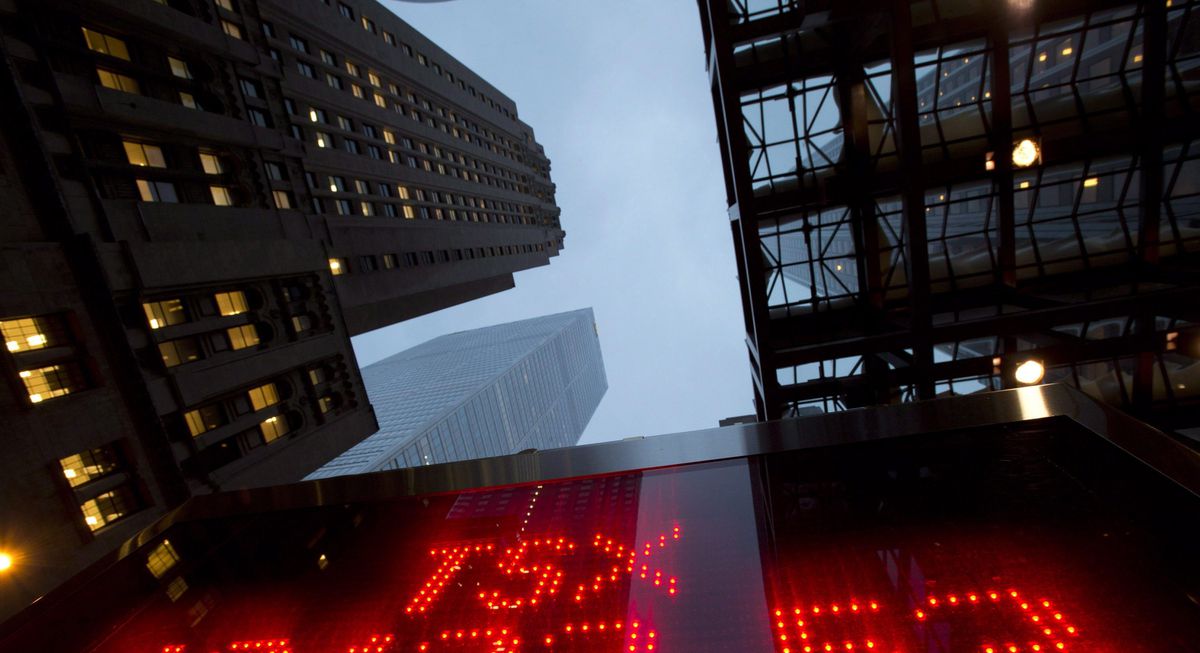World equity markets scaled fresh records as a year-end rally climbed further on Friday with upbeat Chinese economic data and optimism a U.S.-Sino trade deal is imminent raising global growth prospects, but the dollar weakened as risk appetite grew.
Wall Street set new all-time highs at the open or soon after and European shares rose to a third day of record peaks this week as various equity markets remained on course for their best year since the global financial crisis a decade ago.
Profits at Chinese industrial firms grew at the fastest pace in eight months in November, rising 5.4 per cent from a year earlier to 593.9 billion yuan ($84.93 billion). The gains snapped three months of decline, but broad weakness in domestic demand remains a risk for corporate earnings in 2020.
The U.S.-China trade war rattled international commerce. Bilateral trade between the two largest economies fell 15.2 per cent in the 12 months through November versus the same period ended in 2018, according to Panjiva, a S&P Global Market Intelligence unit.
The dollar slipped across the board as increased investor appetite for risk sapped the safe-haven appeal of the greenback.
In Toronto, Canada’s main stock index slipped slightly after reaching another record high on Friday as investors cheered upbeat economic data from China amid growing optimism over an initial U.S.-China trade deal.
The Toronto Stock Exchange’s S&P/TSX composite index was unofficially down 11.94 points, or 0.07 per cent, at 17,168.21, after hitting a record high of 17,230.58 just after the opening bell.
The index is set for its best year since the global financial crisis, powered by returning confidence in the global economy in the wake of an imminent U.S.-China trade truce and hopes of a smooth Brexit.
Marijuana producers led a 2.7-per-cent drop in health care stocks. Hexo Corp. fell 18.3 per cent, while Aurora Cannabis Inc., Canopy Growth Corp. and Cronos Group Inc. all dipped more than 4 per cent.
The energy sector climbed 0.2 per cent, while the materials sector, which includes precious and base metals miners and fertilizer companies, slipped 0.5 per cent.
Leading the index were Semafo Inc., up 4.4 per cent, NovaGold Resources Inc., up 3.3 per cent, and Westshore Terminals Investment Corp., higher by 2.4 per cent.
MSCI’s gauge of stock performance in 49 countries gained 0.35 per cent while the pan-European STOXX 600 index rose 0.21 per cent, both setting all-time highs.
Equity markets are poised to rise further in 2020, even as high valuations pose a concern, said Rahul Shah, chief executive of Ideal Asset Management in New York.
“Considering the dynamics of the market right now we think that equity investors should be positioning for further bullish momentum in 2020,” Shah said.
“Valuations have been ticking up a little bit, but there have been many times in market history where valuations stay above average for a while,” he said.
The S&P 500 ended little changed on Friday and the Nasdaq ended an 11-day streak of gains after some late-session weakness, although the Dow managed to eke out another record as investors paused after a year-end rally.
The Dow Jones Industrial Average rose 23.53 points, or 0.08 per cent, to 28,644.92, the S&P 500 gained 0.07 points, or 0.00 per cent, to 3,239.98 and the Nasdaq Composite dropped 15.77 points, or 0.17 per cent, to 9,006.62.
The S&P 500 was just shy of surpassing a 29.6 per cent gain in 2013, which would give the U.S. benchmark its best year since 1997.
Overnight in Asia, MSCI’s broadest index of Asia-Pacific shares outside Japan jumped 0.8 per cent to 555.39, a level not seen since mid-2018. It is up 15.5 per cent so far this year.
Emerging market stocks rose 0.58 per cent.
Germany’s benchmark 10-year Bund yield held steady below recent six-month highs while U.S. Treasury yields fell as the government debt found support following a sell-off that sent yields to one-month highs.
Yields have risen amid increased risk appetite driven by optimism that a Phase 1 U.S.-Sino trade pact will spur global growth and as major central banks around the world inject liquidity into the market.
The euro rose to a 10-day high. The dollar index fell 0.62 per cent, with the euro up 0.78 per cent to $1.1183. The Japanese yen strengthened 0.20 per cent versus the greenback at 109.43 per dollar.
U.S. gold futures climbed to a seven-week high of $1,518.70 an ounce. Spot gold added 0.1 per cent.
Oil prices rose to the fourth consecutive weekly gain on Friday, steadying at three-month highs after new data showed U.S. crude inventories fell far more than expected, while upbeat economic data and optimism over a U.S.-China trade deal fueled a year-end stock market rally.
Brent crude rose 24 cents to settle at $68.16 a barrel, the highest since mid-September. The international benchmark has climbed nearly 27 per cent since the end of 2018.
West Texas Intermediate rose 4 cents to settle at $61.72 a barrel, another three-month high. The U.S. benchmark has risen 36 per cent so far this year.
U.S. crude stocks fell by 5.5 million barrels in the week to Dec. 20 to 441.4 million barrels, according to the Energy Information Administration, far exceeding analysts’ expectations of a 1.7 million-barrel drop.
“Inventories are bullish almost across the board,” said Josh Graves, senior market strategist at RJO Futures in Chicago.
A year-end stock market rally also helped lift oil prices as consumer sentiment continued to improve, he said.
“It’s a Santa Claus rally. People tend to buy more things that will indirectly drive the price of oil up,” Graves said.
Reuters
Source link
